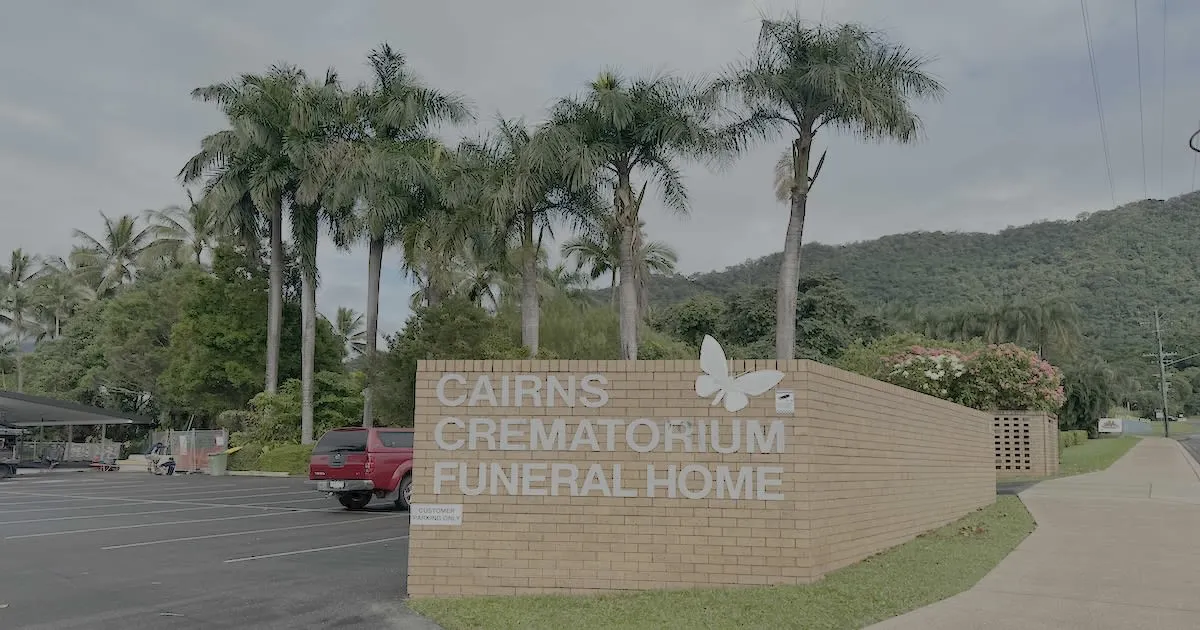Struggle and Resistance in the Far North >> Up in Smoke
The socialism I believe in isn’t really politics. It is a way of living. It is humanity. I believe the only way to live and to be truly successful is by collective effort, with everyone working for each other, everyone helping each other, and everyone having a share of the rewards at the end of the day. That might be asking a lot, but it’s the way I see football and the way I see life.
(Bill Shankly)
Table of contents
A Brave New World
The world changed so much in my lifetime. Growing up in a small rural community, where the collective good was an active consideration, I witnessed it shift into a place where the focus had turned inward, towards the individual, often at the expense of the common good. The world of my later years was not the one envisioned by George Orwell in 1984; it was the one foreseen by Aldous Huxley in Brave New World.
Any real notion of community had been eroded—not by an all-seeing Big Brother controlling small pieces of information released to the people, but by a high-tech world that flooded them with endless information, some of it true, but much of it false.
To the extent that information was mediated, it was not by the government but by algorithms controlled by billionaire tech barons, who overwhelmingly acted in their own interests.
It was astounding to witness people being so easily influenced—whether by social media influencers or whatever the algorithm pushed on a given day.
In the end, all anyone can do is what they can. In 2025, my concerns were those of a local councillor: safeguarding the future of Cairns’ inner city, tackling the housing crisis affecting many constituents, addressing urban heat, and delivering higher-quality infrastructure.
CBD Problems Heat Up
I had always found it curious how issues in the Cairns CBD dominated debate around the Council table and community discussions. Complaints usually centre on the hot, unpleasant amenity of CBD spaces and the prevalence of ‘anti-social behaviour’.
At a time of climate change, with increasing temperature extremes, the solution for the CBD was two fold.
Racist, Selfish, Mean and Nasty
For all of my life there had been a transient homeless population of Aboriginal people in Cairns’ CBD, this was nothing new. Sadly, seeing these marginalised people in town had become a normal part of life for me. Yet whenever business was slow or critics needed someone to blame, these individuals bore the brunt of it.
Things changed in the 1980s and 90s with the tourism boom and the rise of alfresco dining. Suddenly, encounters with intoxicated individuals became more frequent and personal. These itinerants were often drunk and occasionally rowdy, but most concerningly, they were ‘bad for business’.
However, in my experience, there are two types of people in life: those who lift others up, and those who push them down. Blaming this small group of Aboriginal people for the city’s problems was a clear example of kicking down.
The cruelty of this attitude was on full display during my second stint on the council (2020-25). I saw these critics for what they were—racist bigots, always eager to scapegoat the vulnerable.
If they truly wanted a solution, surely they would have focused on expanding social services to address homelessness, addiction, mental illness, and acquired brain injuries–all of which were tragically common among these struggling individuals. Addressing these underlying issues remains the only way to sustainably address this issue.
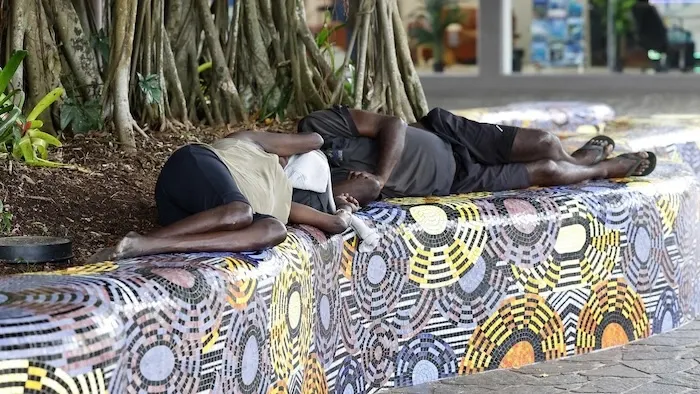
The Three Pronged ‘Fix’ for Cairns CBD
It was not hard to identify three clear policy objectives to create a vibrant sustainable CBD for Cairns. I required adopting the following. What was needed moving forward was:
- A Big Green Canopy
- Tropical Design incorporating Tropical Art; and
- An increased CBD residential population.
Committing to these three objectives was a way to secure the future of the city in a time of economic uncertainty, in the midst of a climate crisis.
A Big Green Canopy
The number one priority should have been to encourage tropical design and implement Council-funded planting schemes to provide shade and reduce Cairns CBD heat. Landscaping is crucial in any tropical city, especially as temperatures rise. Some CBD streets are practically unbearable in peak summer—people simply rushed from air-conditioned cars to air-conditioned buildings as quickly as possible.
Of course, I was aware that CBD development clashed with the broader goal of relocating residential areas away from low-lying zones to mitigate risks from sea-level rise and increasingly violent natural disasters. However, whether in the Council’s Climate Action Plan or the Coastal Hazard Adaptation Strategy, it was clear that—unlike vulnerable beachside properties in Machans, Holloways and Yorkeys Knob—the CBD would be protected from the rising sea-levels.
Tropical Design and The Arts
By blending climate-responsive architecture, green spaces, and vibrant cultural expression, Tropical Design enhances liveability—keeping our cities cooler, more sustainable, and deeply connected to place.
The Arts celebrate local heritage, foster creativity, and drive tourism. Together, they shape a unique identity for tropical cities like Cairns—where functionality meets beauty, and culture thrives alongside nature.
A CBD Residential Community
Another key solution was to increase the residential population in the city centre. We know that higher density living leads to greater activity, which in turn helps reduce crime and antisocial behaviour.
Whether through nature-based solutions or hard engineering defences, the CBD was here to stay, given the vast capital invested. Maintaining it required ongoing support—a middle-ground position for the Council, and as a local, I understood that.
Cairns CBD: A Councillor’s Role
It always surprises me when people see something on a Monday and contact their local representative in the hope it will be resolved by Tuesday. The Local Government Act (or the law) makes it clear that Councillors in Queensland have no role in the operational delivery of council services.
Operational Matters – No
Many people email me with complaints, and during my time, I always took the same action, I forwarded them to Council’s Customer Support for their assessment and action. There is no role for an elected councillor in this process, and any elected member who tries to intervene does so at their own risk, both to their reputation and continued employment. This is how the ‘separation of powers’ works at local government level–it how the system is meant to work!
Strategic Issues – Yes
Where there are strategic issues concerning the city—or when building a vision for Cairns’ future—that is a role for a Councillor, as is the annual budget process.
People contact me about issues like loose pavers in the CBD or language used by a homeless black man that they found offensive—what a palaver!
This approach is also counterproductive because, by the time I relay the issue to Council officers, they receive it second-hand without all the facts, the outcome is compromised. It’s far better for residents to lodge a complaint online, which goes straight into the system, allowing officers to act directly and in proportion to the issue raised.
A Sustainable Vision for a Vibrant CBD
When it came to the CBD, I was very pleased with the work of senior staff, including our new City Architect, Ellen Buttrose, as well as the consultants who helped develop a strategic plan for our future. That was where my attention needed to be, and having qualified technical staff to deliver it made our job much easier.
Of course, these things rarely come to fruition within a single Council term. However, the City Precincts Regeneration Project, with its blue and green corridors, was certainly a vision I was happy to support—one with real life.
I am confident these plans won’t sit forgotten in a Council drawer but will be actioned. It will require significant funding, some of which must come from state and federal governments, but it is absolutely crucial for the CBD to have a future.
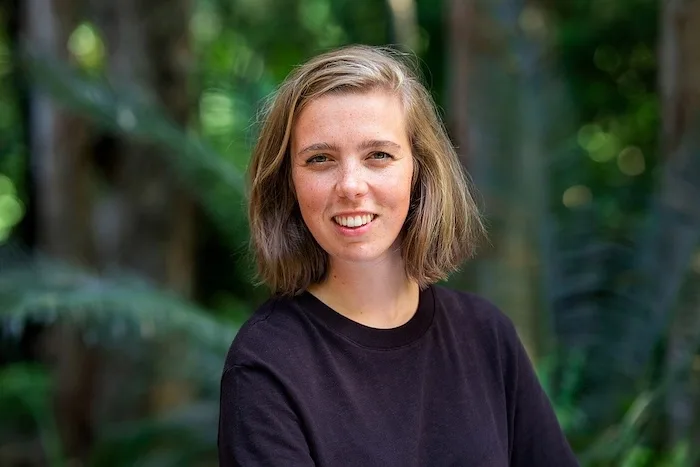
Stimulus Needed
At present, no significant private capital is being spent in the CBD, certainly not on construction–meaning substantial government investment is needed to restore confidence and attract investment back to our inner city.
Significant public investment in the City Precincts Regeneration Project will enhance this part of Cairns and create the much-needed private sector confidence required for business to invest.
The roadmap of costed projects and policy recommendations from the project will promote:
- Urban consolidation through well-located, diverse housing supply and quality public spaces
- Heat reduction, improved urban canopy, and enhanced access to green spaces
- Connectivity, walkability, accessibility, and safety
- Resilience and hazard mitigation
- Economic and social vibrancy that reflects the community’s diversity
The strategy aligns with ongoing work across the Council, including the Major Events Precinct master planning, Towards 2050, and City Centre Masterplan initiatives. It also complements the Council’s existing efforts to increase housing provision in the CBD through the Develop programme.
Spence Street Pedestrian Promenade
With the upcoming 2032 Olympic and Paralympic Games driving investment in Barlow Park and surrounding areas, there is a major opportunity to create a more appealing, safer, and cooler connection between the city’s dining, accommodation, and entertainment hubs and its key event venues.
Currently, the walking route between the Cairns CBD and the Major Events Precinct is hot, exposed, and lacks vibrancy, making it an unappealing journey for both visitors and locals travelling between the city and Barlow Park.
To address this, Spence and Severin Streets should be revitalised as a sports-themed, shaded promenade—forming a key pedestrian artery linking the CBD and event venues, while connecting two vital economic hubs.
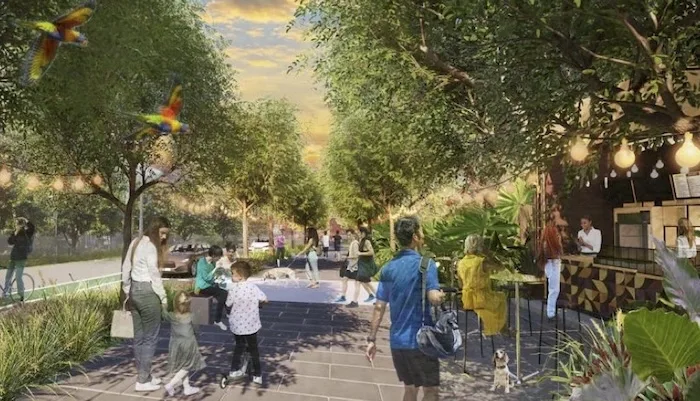
Transforming Spence and Severin Streets into cool, walkable, and engaging thoroughfares will help activate shopfronts and support local businesses, turning these routes into lively, shaded tropical promenades.
The proposal includes a new 6.5m-wide shaded promenade along Spence Street, creating a uniquely tropical pathway between the Events Precinct and the city. Similarly, Severin Street should be upgraded into a people-friendly, festive entrance precinct, with a 4.5m-wide shaded promenade and arrival spaces to ensure seamless connectivity with Spence Street and the event venues.
Lily Creek Stream Way
Lily Creek, a tidal sub-catchment of Saltwater Creek, flows through Cairns CBD and Cairns North, passing wetlands, parklands and the rail line to Cairns Central Station.
Historically significant to Cairns’ First Peoples as a food source and gathering place, it remains an important wildlife habitat for species like flying foxes, bush turkeys, and fish including barramundi and mangrove jack. While some vegetated sections provide green retreats, many areas suffer from narrow paths, poor connectivity, weed infestation and limited natural surveillance.
With its cultural, ecological and urban value, Lily Creek has strong potential as a green transport corridor. Future development could connect it to the Botanic Gardens, Convention Centre and Esplanade, creating a ‘green loop’ that enhances both ecology and public amenity.
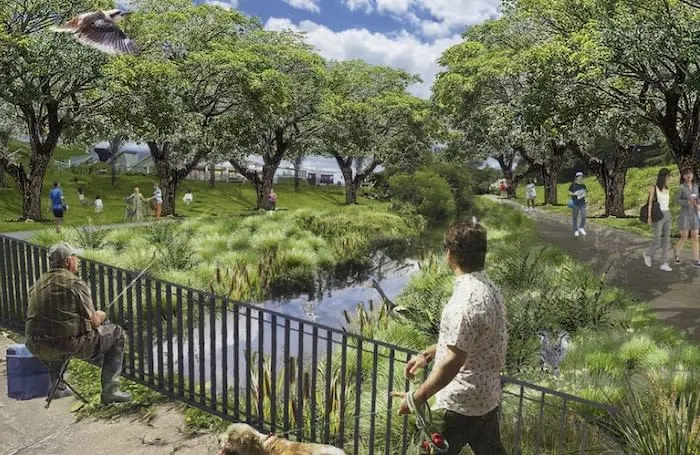
Health Precinct Green Way
The Cairns Health Precinct provides vital community services and holds significant potential to become a more vibrant, green and healthy space. While attracting high pedestrian traffic from patients, staff and visitors, current challenges include:
- Poor lighting and inadequate crossings
- Hot, exposed streets
- Localised flooding
- High parking demand creating congestion
Opportunities for improvement exist within existing street layouts:
- Space for more shade trees and wider footpaths
- Potential for additional pedestrian crossings (benefiting from naturally slow traffic speeds)
- Enhanced mobility options including scooters
These upgrades will:
✓ Improve connectivity between housing and workplaces
✓ Create a cooler, greener and more pedestrian-friendly environment
✓ Maintain crucial on-street parking capacity
The proposed streetscape improvements in the Road Map will complement new housing and mixed-use developments, collectively transforming the precinct into a healthier, more walkable and amenity-rich environment for workers and residents alike.
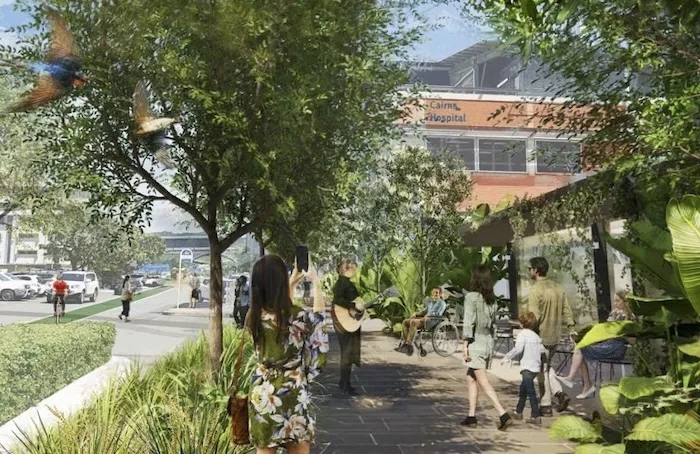
Housing for the People
During 2025, Cairns remained in the grip of a housing crisis. I supported development applications to increase housing stock as quickly as possible, often in the face of opposition from neighbouring property owners more concerned with their own property values than getting roofs over the heads of their fellow Australians.
The crisis stemmed from years of underinvestment by state and federal governments. As a local councillor, the most one can do is play their part and I firmly advocated for the construction of publicly funded social and community housing across the city.
There were only one or two proposals I did not support, including a large-scale social housing development concentrated in a single location, as well as a building that failed to incorporate tropical design principles or consider its impact on neighbouring properties.
That said, I recognised the need for higher-density housing in Cairns’ inner city. While remaining mindful of climate change and rising sea levels, I supported developments that met the Council’s flood immunity requirements.
In an era of competing priorities, the most pressing concern was putting roofs over people’s heads as swiftly as possible while also revitalising the CBD by bringing more residents, activity, and life back to its streets and shops.
Parramatta Park
During this period, several developments took place in Parramatta Park, including a block of units on the corner of Gatton and Severin Streets.
Some residents of Parramatta Park argued that such housing would create a slum, but this was an exaggeration. All available evidence indicated that increased density in these areas led to improved public safety and greater economic vitality.
Any long-term Cairns local could clearly see that the changes in Parramatta Park mirrored trends of gentrification and thoughtful urban renewal. Publicly funded developments would promote long-term equity by allowing social housing tenants to remain in what were becoming increasingly desirable neighbourhoods.
Westcourt
Council leased a parcel of land at the intersection of Gatton and Tills Streets to Access Community Housing Company Ltd to help address the city’s urgent housing crisis. The development will deliver much-needed secure and affordable housing for Cairns residents.
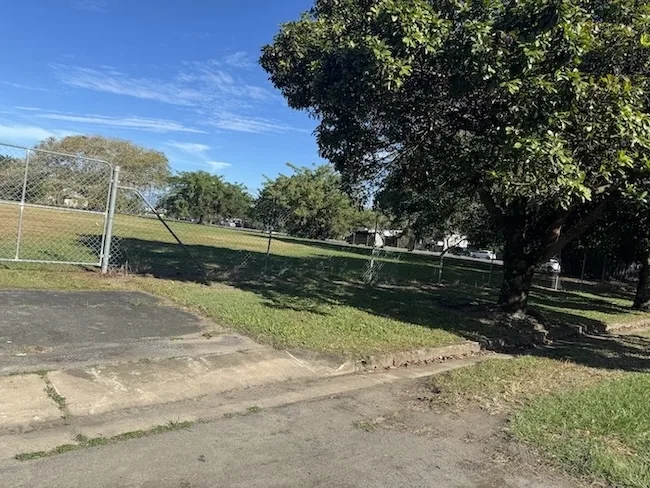
Carbon Credit Up in Smoke
The former Manning Council had shown considerable leadership by becoming the first council to enter into a contract to purchase energy generated from a local wind farm owned by CleanCo. I had been delighted to support this agreement, which commenced on 1 July 2024.
By May 2025, the Council was holding 11,745 LGCs (Large-scale Generation Certificates), accrued as part of the CleanCo agreement. These LGCs needed to be surrendered to validate the Council’s renewable energy purchase and uphold the intent of the agreement. This was crucial for Council to meet its Net Zero by 2030 target.
Importantly, the Council was forecast to save over $1.1 million per year in both FY25 and FY26 compared to purchasing energy conventionally. Financially, we had done well from the agreement. However, the Council had to formally ‘surrender’ these credits to honour the original agreement and meet our emissions target.
To my disappointment, the new Eden Council decided instead to sell these credits to the highest bidder. This was against the intent of the original agreement.
Myself and Councillor Coghlan spoke against the sale of the credits, as did Anna Middleton, who gave a passionate address, highlighting the need to surrender them to honour the original intent and meet our emissions target.
To be clear, this meant the credits we had earned from being. Good corporate citizen, would be sold on the open market and purchased by a big polluter, to allow them to pollute and emit more greenhouse gasses.
Unfortunately, the climate sceptics on the Council carried the vote. The sale of Cairns Council carbon credits was greenwashing at its worst. Doing it at a time of catastrophic climate change was a betrayal of Council’s professed values.
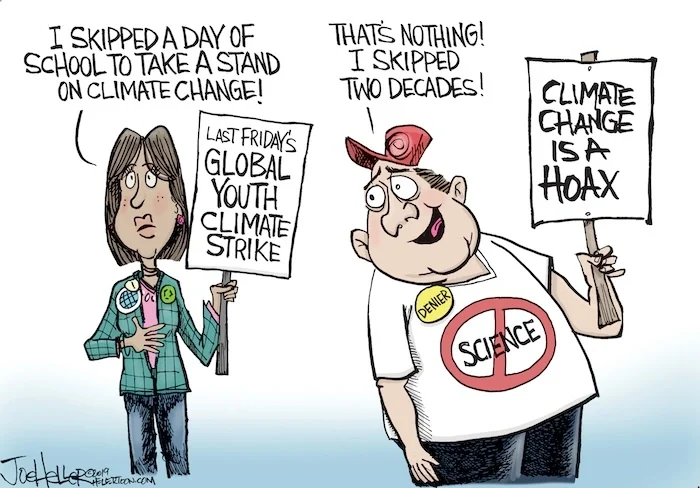
Jonathan Strauss – An FNQ Bio
Jonathan Strauss isn’t just an activist, he’s a fighter for everyday people, driven by the belief that a fairer world is possible. For years, he’s been on the frontlines of Australia’s progressive movements for decades, standing with renters facing eviction, workers fighting for dignity, and communities demanding real change. His activism isn’t abstract; it’s personal.
You’ll often find Strauss where the struggle is; at a tenant’s rally holding a megaphone, on a picket line with striking workers, or in a community hall explaining how socialist policies could transform lives. His passion comes from seeing how the system fails people: families priced out of homes, students drowning in debt, workers exploited for corporate greed. That’s why he doesn’t just protest, he organises, educates, and fights for alternatives.
As a Socialist Alliance candidate in elections, Strauss doesn’t trim his message to suit the political establishment. He calls for what working-class communities actually need: free education, housing as a right, and democratic control over essential services. His campaigns aren’t about career politics—they’re about building power from the ground up.
But his activism extends far beyond elections. Whether it’s marching for climate justice, standing in solidarity with Palestine, or defending refugee rights, Strauss embodies the Socialist Alliance’s core principle: an injury to one is an injury to all. His internationalism isn’t just rhetoric, it’s a refusal to stay silent while oppression thrives anywhere.
What sets Strauss apart isn’t just his tireless work. He listens as much as he speaks, turning frustration into action and skepticism into solidarity. For him, socialism isn’t just a theory; it’s the collective strength of ordinary people rising up. And that’s exactly the kind of leadership that fuels real change.
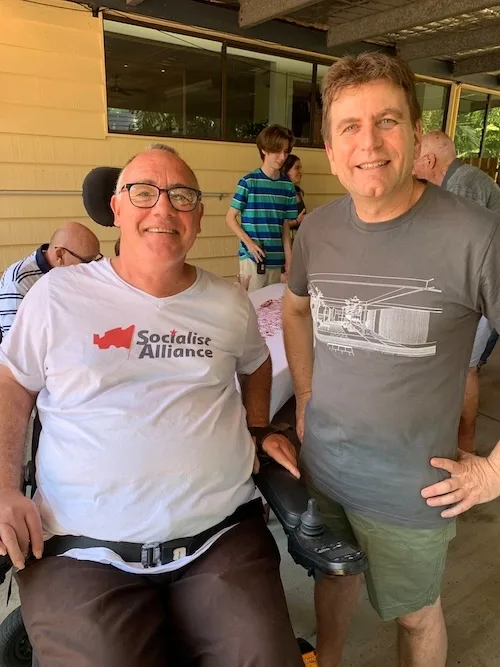
The Collective Spirit
As a student of history and politics, the early 12th century always fascinated me. The majority of humanity was marginalised and disadvantaged at the time, and their collective response demonstrated the best of what we can achieve working together.
The IWW
This spirit was embodied in the culture of the IWW—the Industrial Workers of the World. The IWW, often called the “Wobblies”, was a radical labour union founded in Chicago in 1905. Unlike mainstream unions at the time, the IWW aimed to unite all workers—regardless of skill, race, or gender—into “One Big Union” to overthrow capitalism through direct action and workplace solidarity. Their philosophy was unity, and their members stood together.
This was evident in the struggles of young children working in coal mines and textile mills, where people laboured 56 hours a week yet lived in poverty. By standing together, they found ways not only to survive but to improve their conditions—and that’s exactly what they did, alongside the broader labour movement of the era.
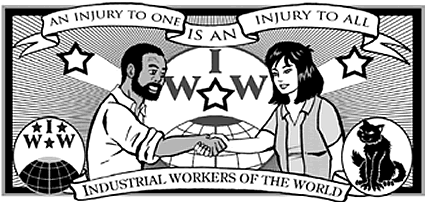
The Battle of Parramatta Park
During the Great Depression, many men on Australia’s eastern seaboard packed up their swags and took to the road in search of work. So widespread was this practice that the term ‘on the wallaby’ became commonly used to describe those travelling on foot for employment or wandering as vagrants.
For many of these desperate men, Cairns was the end of the line. Having trekked hundreds of miles without finding work or sustenance, they set up camp at the Parramatta Park Showgrounds.
However, as the annual Cairns Show approached, the townspeople made it clear they valued their festivities over providing refuge for these displaced travellers.
The itinerants were soon evicted from the showground. In an effort to clear the area, 500 Cairns residents and 34 police officers clashed with over 100 of the men. The confrontation turned violent, with blood spilled and scenes resembling a slaughterhouse.
The itinerants armed themselves with whatever they could—sticks, bottles, and pieces of wood—as the two groups fought. At least 80 were injured, with eight hospitalised, including several prominent citizens. However, the itinerants bore the brunt of the violence.
The Battle of Parramatta Park ended with the locals—aided by police—driving the itinerants from the site.
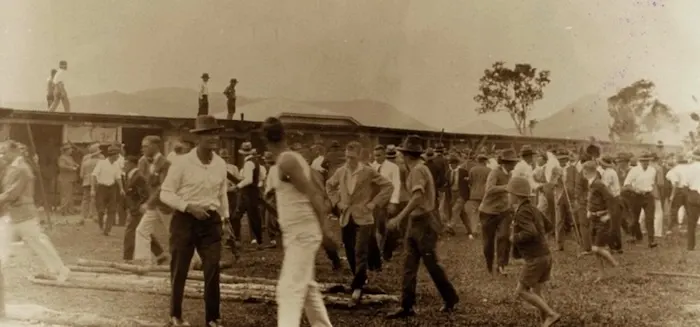
Songs for the People
While I deeply admire the political philosophy, activism, and history of the IWW, it was their music that I enjoyed the most. Folk songs fuelled my passion, and I’ve spent much of my life engaging with them. It’s always important to remember that there is nothing new under the sun. The musical tradition I embraced evolved during this era—from Joe Hill to Woody Guthrie to Bob Dylan—forming an incredible legacy that celebrated the lives and struggles of working people and held those in power to account.
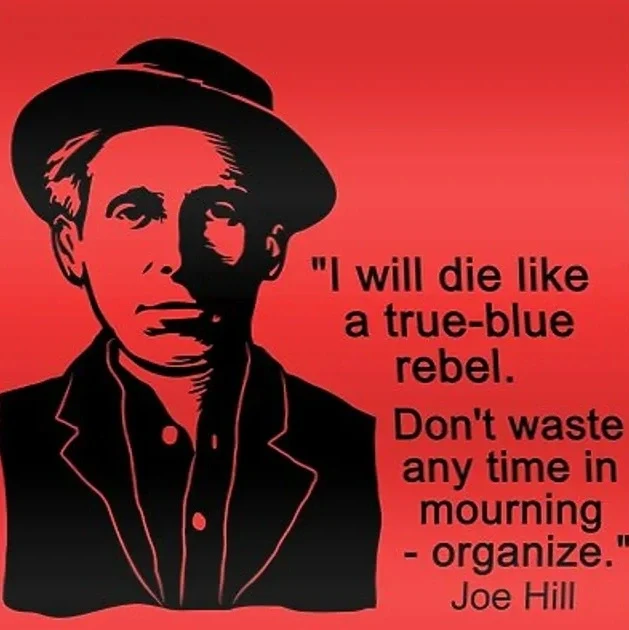
Generational Change
As I aged, it caused me to reflect that our generation of progressive warriors had failed to save our environment from destruction and protect disadvantaged people in our community. However, the battles we fought mattered, even if we did not win the war.
The work we do is about standing up to the force of darkness, no matter how difficult the fight. In the words of Chris Hedges, “I do not fight fascists because I will win. I fight fascists because they are fascists”.
Perhaps Tony Benn put it best when he said, “Every generation has to fight the same battles, again, again, and again. There is no final victory and there is no final defeat.”
Fightback and Farewell: 150 and Out!
150 years after my descendants first arrived in the Far North Queensland, there is more inequality than ever before. Our First Peoples remain deeply disadvantaged. Many minority groups still suffer under the heel of a capitalist superstructure that demeans and devalues them, while racism and bigotry remain rife.
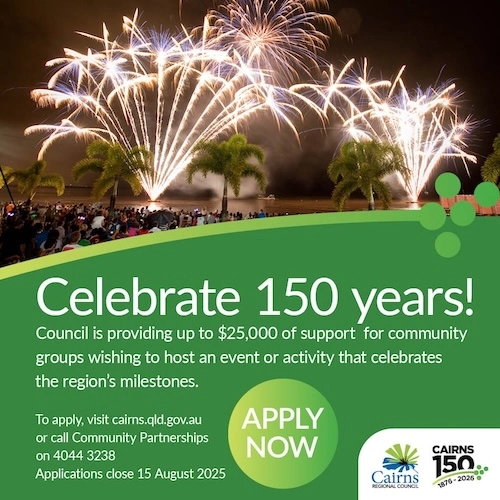
As long as a majority of those in leadership positions continue to support unbridled capitalism and neoliberal policies, things will not improve. Consequently, the battle for equality, justice, and the environment is dependant on greater success in the battle for Ecosocialism.
My Universal Utopia
Personally, I’ve always found it disappointing when, as they approach the end, a friend or public figure rediscovers their faith. Contemplating my own demise, I certainly have no intention of calling for a priest, minister, imam, or rabbi.
Yet I once recall an old Indian spiritual leader being interviewed as part of a study on the world’s religions. When asked the inevitable question about what happens after death, he replied: “Right now, I am one man—an individual. But when I die, I will no longer be an individual. Instead, I will become part of the collective. The singular returns to the universal.”
So while our individualist, consumerist society seems hellbent on destroying this world, perhaps in death—when we shed our individuality—we might finally become part of something better that is universal.
- Far North Queensland
- Growing up in Australia
- Aboriginal and Torres Strait Islander People
- Queensland Political Culture
- Princess Alexandra Hospital Spinal Unit
- People with Disabilities
- Cairns Regional Council
- Conservative Cairns Council
- ALP Qld
- Abortion Law Reform
- Fighting Fossil Fuel
- Local Government Corruption
- Losing to Labor
- My Cairns Council
- Council Mayors Silencing Dissent
- Socialist Alliance and Fighting Fascism
- Jenny Pyne, Life and Pain
- Cairns Council Members Swing Right
- Fightback and Farewell
- Up in Smoke
THE END
